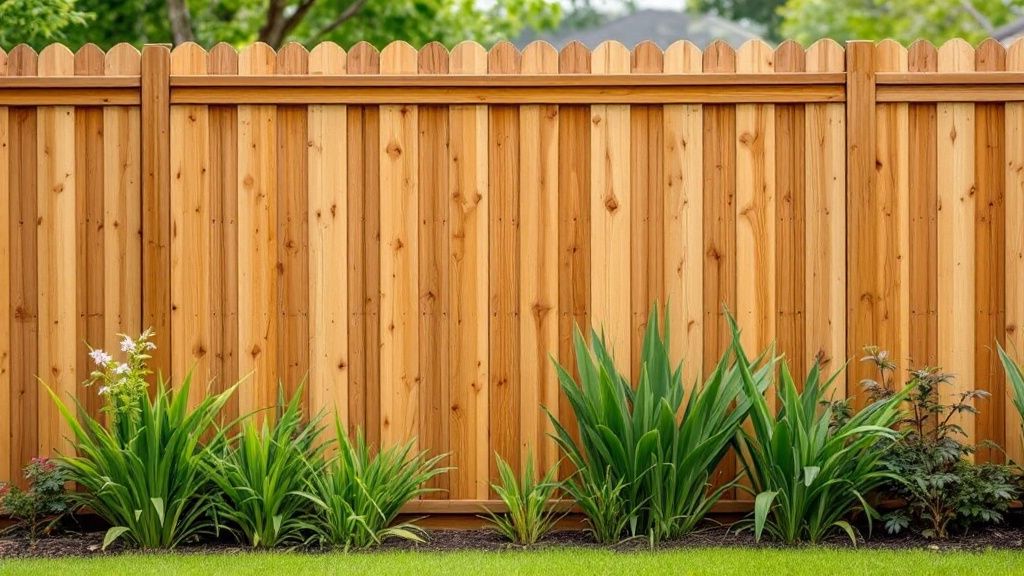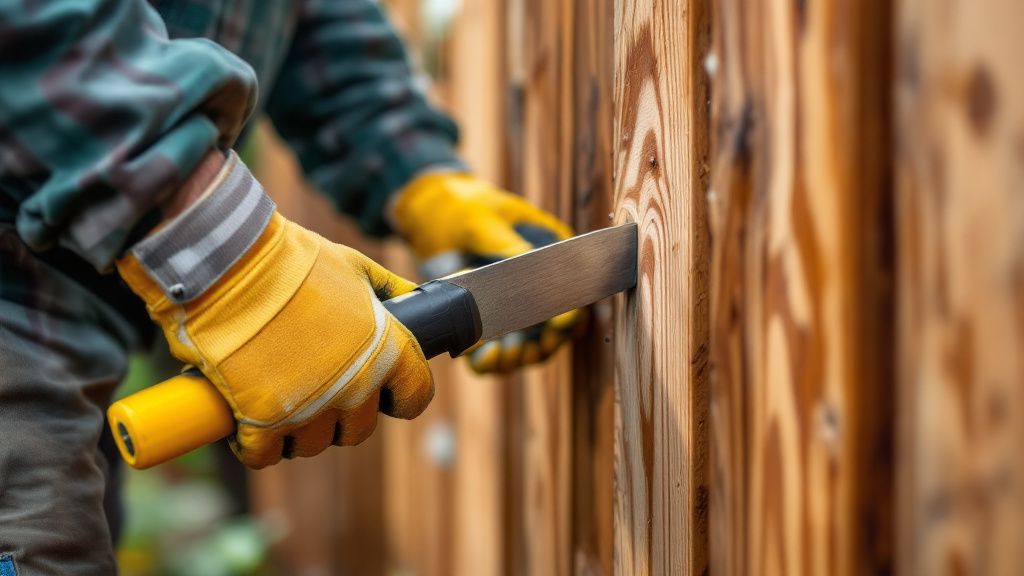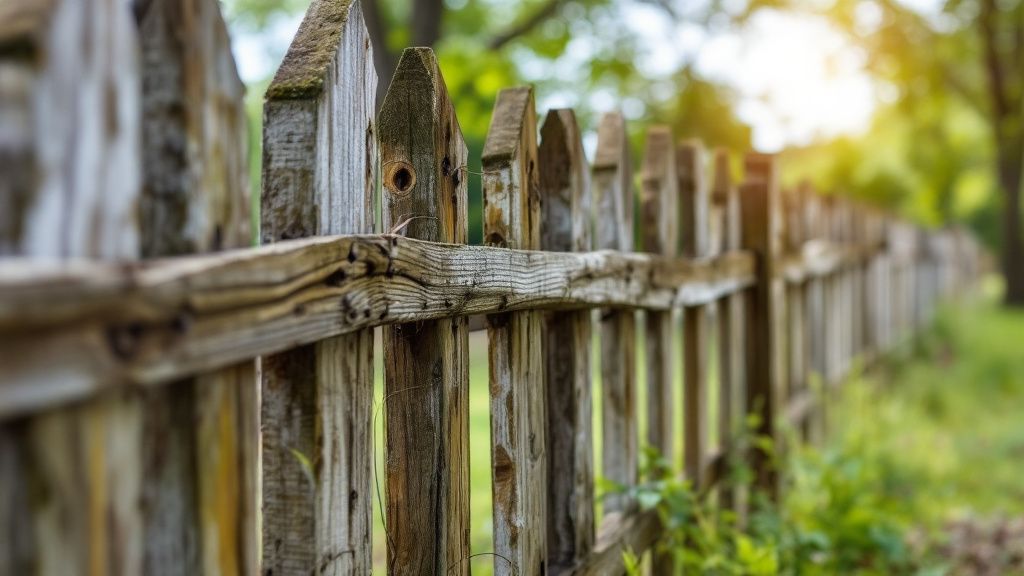DIY Fence Building Tips That Save Time and Look Professional
- Travis Andersen

- May 12
- 6 min read
Updated: May 16
Crafting a fence is more than merely placing posts into the ground; it’s an intricate dance of precision and style that combines functionality with aesthetics. In the journey to mastering the art of fence building, you’ll explore the techniques and materials that transform a mere boundary into a definitive statement of design. Whether you’re embarking on a new fence for its sheer elegance or tackling a fence repair to revitalize a timeless structure, understanding the nuances of fence installation is essential. Each project is unique, demanding a balance between durability and charm, ensuring your creation endures the test of time while complementing its surroundings.

Understanding Fence Design Principles
Great fence design principles begin with a deep understanding of your landscape and personal style. You determine what the fence will enclose or define, influencing choices like height, material, and color. This decision-making will set the foundation for a new fence that both stabilizes your perimeter and enhances curb appeal. A well-thought-out design captures the essence of the environment while addressing privacy, security, and aesthetic needs.
Comparing traditional wood fences to modern alternatives like vinyl or metal offers insight into durability, maintenance needs, and style flexibility. While wood provides a classic warmth and can be customized with various stains, vinyl and metal often require less maintenance, making fence installation more appealing over time if longevity with low upkeep is a priority. Your choice should reflect both practicalities and personal taste, ensuring seamless integration with your surroundings.
Many aspects of fence design consider future fence repair to maintain its original glory. Ensuring easy access for any potential repairs or adjustments will allow your fence to remain functional and eye-catching. Thoughtful planning can thus result in a captivating fence that stands the test of time, promising both beauty and resilience in equal measure.

Tools You Need for Fence Building
Embarking on a fence building project requires the right set of tools to ensure a successful and efficient job. Essential items include a post hole digger for making precise holes, a level to guarantee alignment, and a power drill for securing materials. Each of these tools plays a vital role in the construction of a new fence that not only meets functional demands but also stands strong against time and elements.
Incorporating both traditional and modern tools can enhance the overall process of fence installation. For instance, the use of laser levels, as opposed to traditional bubble levels, ensures greater accuracy and speed. The current state of fence building tools shows a growing preference for battery-operated equipment, which provides flexibility and power across various terrains. This trend in tool innovation suggests a shift towards versatility and efficiency in fence projects.
When considering future fence repair needs, it’s beneficial to have tools like a circular saw for precise cuts and a crowbar for dismantling. These allow you to address any wear and tear without the need to wait for professional assistance. Understanding which tools best suit your fence type and landscape ensures your fence remains as resilient and attractive as the day it was installed.

Preparing Your Site for Construction
Ensuring your site is ready for fence construction requires careful planning and assessment of the space. Start by surveying the property lines to avoid any boundary disputes, and clear any obstacles such as rocks or debris that could hinder your progress. This preparatory work lays the foundation for a smooth fence installation process, saving you time and resources.
It's important to assess the ground conditions and slope as they will determine the type of posts and installation methods you’ll need. In areas with softer soil, you might need to consider using concrete for additional stability. In the next few years, advancements in soil stabilization techniques are likely to revolutionize how easily and securely we can anchor posts, offering even more options for varied terrains.
Mark out the fence line with stakes and string to visualize where your new fence will stand. This practice helps ensure everything is aligned properly before you start digging. Consider weather conditions for optimal working days, as wet or overly dry conditions can affect the ease of post hole digging and material handling, ultimately impacting the entire construction process. Planning ahead transforms potential challenges into manageable tasks.

Step-by-Step Fence Installation Guide
What is the crucial first step in ensuring a successful fence installation? It begins with laying out your fence line precisely. This involves marking out your boundaries with stakes and connecting them using a taut string to guide the placement of posts. Measuring twice and marking once prevents errors, helping you visualize the completed structure and ensuring your fence follows the desired alignment without any unexpected surprises.
After establishing your layout, commence with digging post holes. The holes should be deep enough to withstand weather conditions, approximately one-third of the post's height. Use a post hole digger or auger for efficiency. Place the posts in their designated spots, ensuring they are straight using a level. Stability here is crucial, as solidly positioned posts form the backbone of your new fence’s durability.
Once the posts are secure, it’s time to attach the rails. The rails connect the posts and form the frame of your fence. Nail or screw the horizontal rails to the posts, ensuring they run parallel to the ground. This framework not only provides support but sets the stage for attaching fence panels. Each rail should be level, promoting structural integrity and aesthetic appeal.
Attach the fence panels or pickets next. Position them evenly along the rails, securing them with galvanized screws or nails. Maintaining consistent spacing between pickets contributes to the fence’s uniform appearance. Fence panels, whether for a picket fence or privacy fence, dictate the design and function, giving you control over the blend of beauty and security it provides.
Consider future needs like gates and fence repair by setting aside extra materials. Gates should be installed with sturdy hinges and latches for optimal performance. The thought you put into each installation step, from layout to final touches, ensures your fence not only fulfills its intended purpose but also stands as a testament to your workmanship and planning.

Safety Tips for DIY Fence Builders
As you dive into the world of DIY fence building, prioritizing safety is essential for a successful project. Begin by equipping yourself with the necessary protective gear such as gloves, safety goggles, and steel-toed boots. These items protect against hazardous materials and potential injuries. It's also advisable to wear ear protection when operating loud machinery like power drills and saws.
Awareness of your surroundings and potential hazards is crucial. Before starting any digging, ensure you've checked for underground utilities to prevent damaging them. Did you know? An incredible 25% of home building-related accidents are caused by unmarked underground utilities. This statistic highlights the importance of planning and caution before breaking ground for new fence construction.
Maintaining a clean and organized work area greatly reduces the risk of accidents. Keep tools and materials neatly arranged and ensure pathways are clear of obstructions. This organization not only enhances safety but also improves workflow, allowing you to focus on each step of the fence installation with less interruption and more precision.
When working with heavy materials or equipment, never hesitate to ask for assistance. Lifting correctly and employing teamwork can prevent strains or injuries. Using tools like winches or levers can be invaluable when moving particularly heavy items. Being mindful of your physical limits ensures that your new fence won't come at the cost of personal harm, securing both structure and safety alike.

Common Fence Building Mistakes to Avoid
One common mistake in fence building is neglecting to check local regulations and property lines before starting. Think of your project as a road map; just like a journey requires a clear path, proper preparation ensures your boundary aligns legally and physically. Ignoring this step can lead to disputes or costly relocations, derailing your new fence plans.
Improper post installation is another frequent error. A fence's posts are its foundation, much like roots for a tree. Without deep and well-secured posts, your fence risks instability, leading to eventual fence repair efforts. Posts should be set at least a third of their length into the ground, with added concrete for support in softer soils.
Rushing through material choice and cutting corners on quality is a pitfall to avoid. Selecting inferior materials can quickly result in degradation and aesthetic decline. Visualize your fence as a long-lasting investment, akin to a carefully chosen wardrobe that suits every occasion. High-quality materials ensure longevity and minimal maintenance, keeping fence installation successes intact over time.
Failing to plan for future adjustments, like gates or expansions, can haunt you later. Consider these elements during the initial phase to make changes easier down the line. Thoughtful planning today sets the stage for a flexible, durable setup that can adapt to future needs without the hassle of major changes or added costs.



Comments